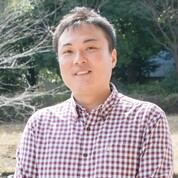Layered Superconductors
A special issue of Condensed Matter (ISSN 2410-3896). This special issue belongs to the section "Superconductivity".
Deadline for manuscript submissions: closed (30 September 2017) | Viewed by 63322
Special Issue Editor
Interests: superconductivity; thermoelectric material; new material; low-dimensional material; superconducting wire; crystal structure analysis
Special Issues, Collections and Topics in MDPI journals
Special Issue Information
Dear Colleagues,
Layered superconductors have attracted much attention, due to the emergence of high-Tc and unconventional superconductivity. Thus, the discovery of new layered superconductors and understanding of superconductivity mechanisms are very important for exploring new high-Tc superconductors. In this special issue, we focus on the exploration of novel layered superconductors, such as Fe-based, Bi-based, and Ti-based layered superconductors. In addition, superconducting properties of high quality bulk and thin film samples will be explored in this special issue.
Dr. Yoshikazu Mizuguchi
Guest Editor
Manuscript Submission Information
Manuscripts should be submitted online at www.mdpi.com by registering and logging in to this website. Once you are registered, click here to go to the submission form. Manuscripts can be submitted until the deadline. All submissions that pass pre-check are peer-reviewed. Accepted papers will be published continuously in the journal (as soon as accepted) and will be listed together on the special issue website. Research articles, review articles as well as short communications are invited. For planned papers, a title and short abstract (about 100 words) can be sent to the Editorial Office for announcement on this website.
Submitted manuscripts should not have been published previously, nor be under consideration for publication elsewhere (except conference proceedings papers). All manuscripts are thoroughly refereed through a single-blind peer-review process. A guide for authors and other relevant information for submission of manuscripts is available on the Instructions for Authors page. Condensed Matter is an international peer-reviewed open access quarterly journal published by MDPI.
Please visit the Instructions for Authors page before submitting a manuscript. The Article Processing Charge (APC) for publication in this open access journal is 1600 CHF (Swiss Francs). Submitted papers should be well formatted and use good English. Authors may use MDPI's English editing service prior to publication or during author revisions.
Keywords
- layered superconductor
- Fe-based superconductor
- Bi-based superconductor
- Ti-based superconductor
- thin film
- superconducting properties
Related Special Issues
- Layered Superconductors II in Condensed Matter (2 articles)
- Layered Superconductors III in Condensed Matter (4 articles)





